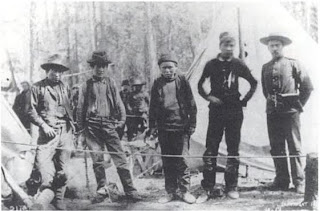
On this day, August 11, 1897 Capt Constantine of the NWMP foresaw problems with the goldrush and instituted the requirement for each miner to bring 1000 pounds of supplies with him when crossing into the Yukon. An excerpt from Pierre Berton:
Despite the precautions enforced by the North West Mounted Police, there were many who made it to the Yukon without proper provisions. “[Charles] Constantine of the Mounted Police viewed the situation with foreboding. As early as August 11 [1897] he had written bluntly to Ottawa that `the outlook for grub was not assuring for the number of people here–about four thousand crazy or lazy men, chiefly American miners and toughs from the coast towns'” (p. 172). Company stores in the region were also aware of probable shortages. “The company clerks admitted only one man at a time, locked the door behind him as they would the door of a vault, sold him a few day’s goods, and sent him on his way. A man could have half a million dollars in gold–as many of them did–and still be able to buy only a few pounds of beans, but it was sometime before the newcomers could understand this. They found it hard to comprehend a situation in which gold by itself was worthless” (pp. 172-173).
Klondike Fever by Berton







